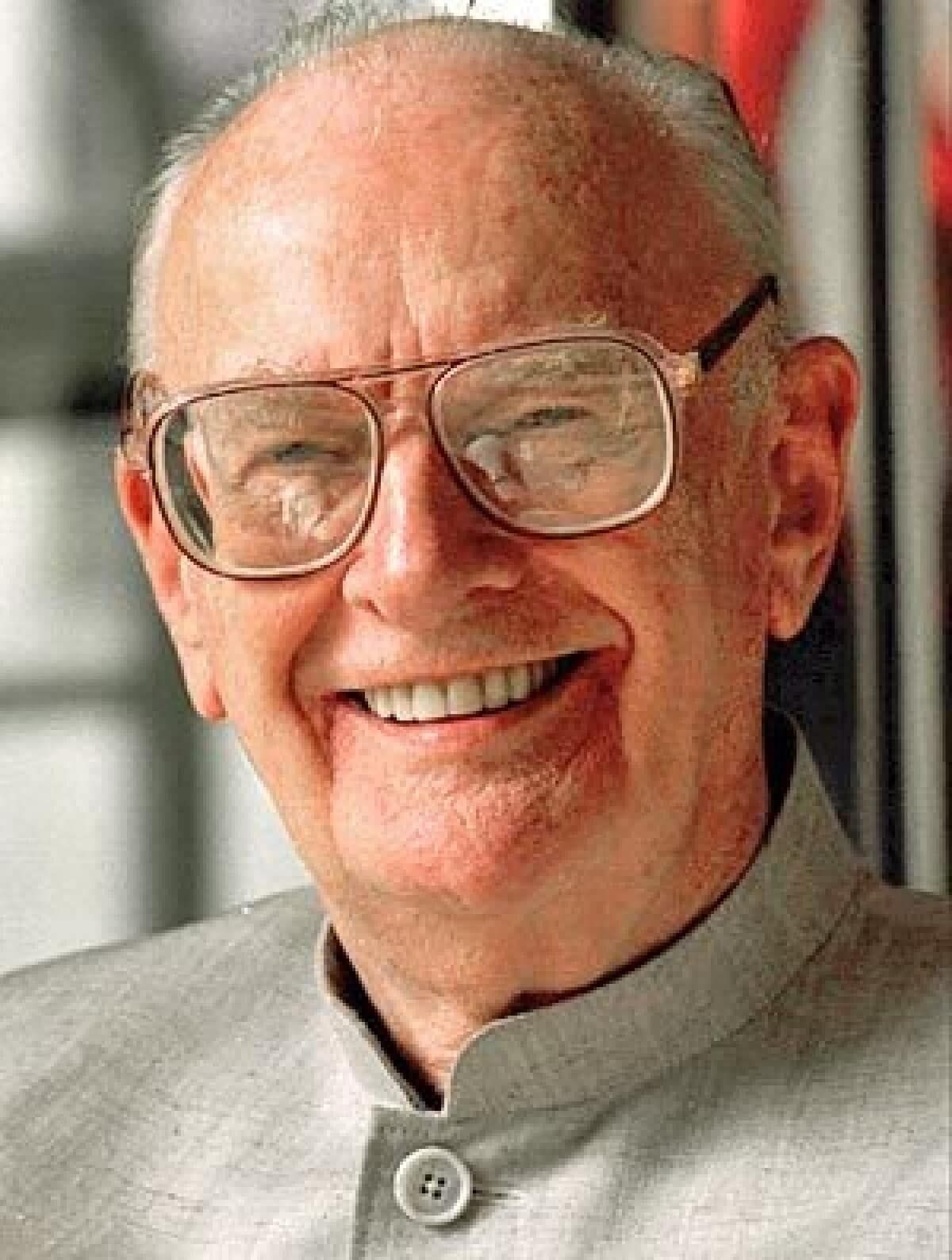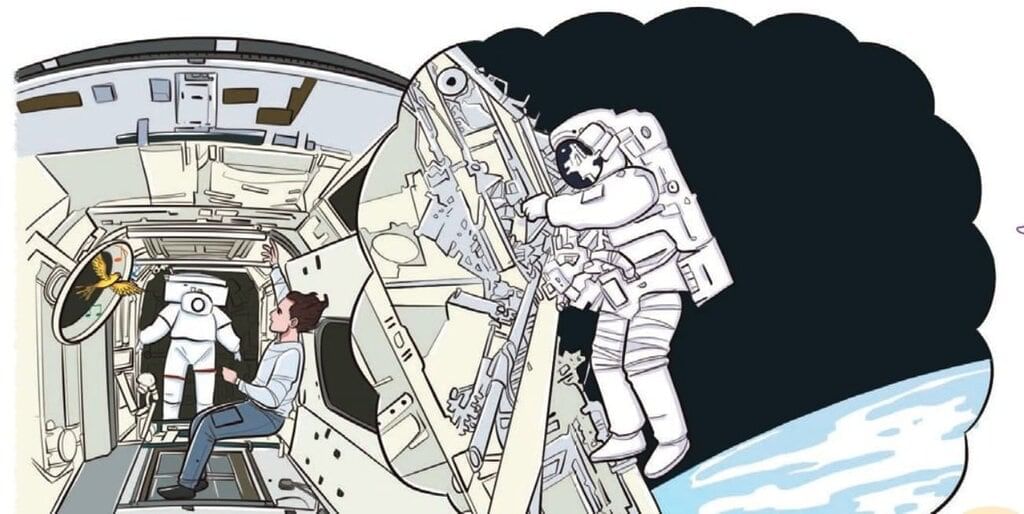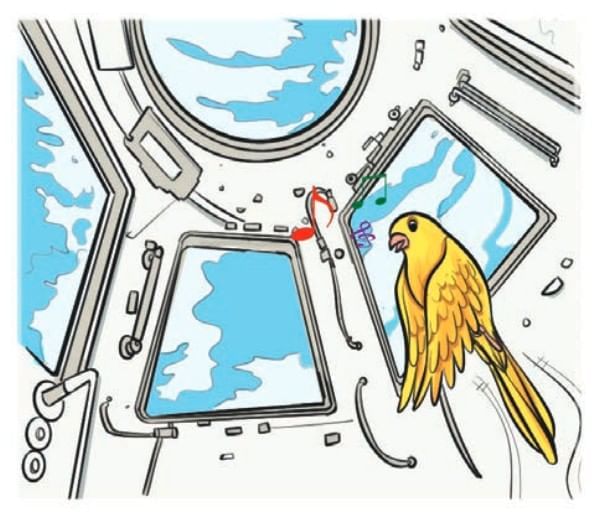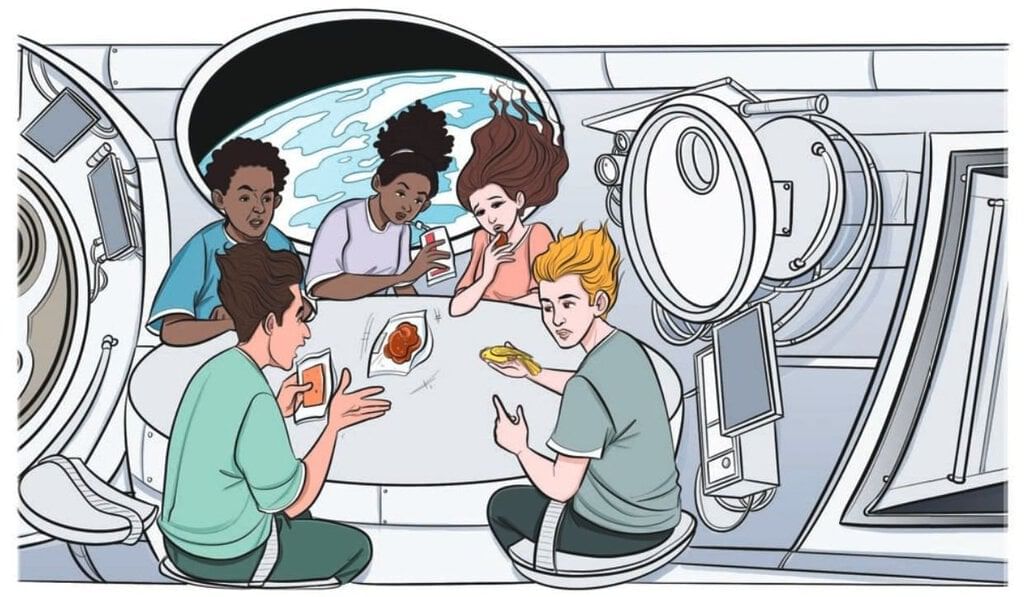Feathered Friend Chapter Notes | Chapter Notes For Class 8 PDF Download
| Table of contents |

|
| Introduction |

|
| About the Author |

|
| Key Points of the Story |

|
| Detailed Summary |

|
| Theme/ Message |

|
| Difficult Words |

|
Introduction
Set aboard a space station far from Earth, “Feathered Friend” is a science fiction story that explores how even the smallest life can play a vital role in survival. The story follows Sven Olsen, a technician who secretly brings a canary named Claribel into space. While the bird becomes a cheerful companion to the crew, her true importance is revealed when she senses a drop in oxygen—long before any alarm does. Through this gentle and thoughtful tale, Arthur C. Clarke reminds us that in a world filled with machines, nature can still be our most reliable guardian.
About the Author
Arthur C. Clarke (1917–2008) was a world-famous British science fiction writer, futurist, and inventor. He is best known for his novel 2001: A Space Odyssey and many short stories that explore space, science, and technology in imaginative ways. Clarke had a deep interest in space exploration and often predicted future scientific advancements with great accuracy. In “Feathered Friend,” Clarke mixes humour with science to show how something as simple as a canary can be smarter than all the machines in a space station.
 Arthur C. Clarke
Arthur C. Clarke
Key Points of the Story
- The story begins with a character named Sven Olsen, who is a skilled construction worker on a space station.
- Sven has a pet canary named Claribel, which he secretly brought to the station, despite there being no rules against pets.
- Claribel can fly in the absence of gravity and adapts well to her new environment.
- The narrator first discovers Claribel while reviewing technical documents in his small office on the space station.
- Sven initially keeps the ownership of Claribel a secret, but soon everyone on the station knows about her.
- Claribel becomes a beloved pet among the crew, and they manage to hide her from visiting VIPs.
- The crew works in twelve-hour shifts, and life on the space station is relatively quiet without day and night.
- One morning, Sven cannot find Claribel, leading to a sense of worry among the crew.
- Sven eventually finds Claribel unconscious and heartbroken, and he brings her to the crew for help.
- The crew’s cook, Jock, tries to check if Claribel is alive by listening for a heartbeat, but cannot find one.
- They decide to give her oxygen, and to their surprise, she revives momentarily before passing out again.
- The narrator realises that there is something wrong with the air in the station, recalling that canaries are used as gas detectors in mines.
- Jim, the duty engineer, initially dismisses the concern, but he is reminded that the backup alarm system is not connected.
- Later, it is discovered that an eclipse had caused a malfunction in the air purifier, which could have been disastrous without Claribel's warning.
- The story ends with a suggestion that having a canary in space stations could serve as an early warning system for air quality issues.
Detailed Summary
The narrator begins by explaining that there was no rule against keeping pets in the space station, and even if there had been, Sven Olsen would have ignored it. Sven was small and wiry, the kind of person who qualified easily for the space missions where weight mattered a lot. He was also one of the best construction workers in the team, skilled at handling floating girders and welding them into perfect shapes in space's zero-gravity environment.

One day, the narrator was in his tiny office when he heard a strange musical whistle. At first, he thought it was from the station’s intercom, but when the sound continued, he looked up only to see a small yellow canary floating in mid-air. This bird was Claribel, and she was perfectly comfortable in the weightless conditions. She performed a loop in the air and floated away. The narrator was surprised but also amused at how easily Claribel had adapted to space life.
Sven didn’t admit to bringing Claribel aboard right away. When he finally did, it was too late to scold him because everyone had already grown fond of the bird. He explained that he brought Claribel partly out of scientific curiosity to see how a bird would behave in zero gravity. She didn’t need much food or space, and unlike most animals, she didn’t get scared in space.

Claribel became a quiet but cheerful member of the crew. She was hidden during visits from Earth’s important officials, though her chirping sometimes made it hard to conceal her presence. Still, no one suspected that a bird was aboard the space station.
One "morning," which in space is only a term since there's no real day or night, the narrator woke up with a headache and feeling unusually tired. During breakfast, the team noticed that Sven was missing. Someone mentioned that he was looking for Claribel, who usually woke him up with her chirping.

When Sven finally appeared, he looked deeply upset. In his hand was Claribel, motionless and silent. She seemed lifeless. The whole crew was sad and confused. The cook, Jock Duncan, tried to check if she had a heartbeat but couldn’t tell for sure. Someone suggested giving her oxygen using the emergency supply. To everyone’s joy, Claribel came back to life but only briefly. She chirped happily, then fainted again.
The narrator suddenly remembered something important. In olden times, miners used to take canaries into coal mines because the birds were more sensitive to toxic gases than humans. If the bird collapsed, it was a warning that the air was dangerous. He realised that something similar might be happening now.
He told the duty engineer, Jim, that there could be something wrong with the air. At first, Jim dismissed the idea, saying the air alarms would have gone off. But then Jim’s assistant reminded him that the second alarm system hadn’t been connected yet. Jim rushed out without another word.
Ten minutes later, he returned looking embarrassed. It turned out that during an eclipse caused by Earth’s shadow, part of the air purifier had frozen and stopped working. The one alarm that was connected had also failed. Without Claribel’s warning, the crew would not have known about the problem in time and might have died from lack of oxygen.
Thanks to Claribel, the small yellow canary, the whole crew was saved. After this incident, it became common for space stations to keep birds not only as pets but also as natural early warning systems.
Theme/ Message
- The story illustrates the importance of companionship, even in the most unusual environments, as shown by Sven's bond with Claribel.
- The narrative highlights the unexpected roles animals can play in human lives, serving as both pets and protectors.
- It emphasises the need for safety and vigilance in technology-dependent environments like space stations.
- The story also conveys a sense of teamwork and camaraderie among the crew as they work together to solve the problem posed by Claribel’s condition.
- Ultimately, the presence of Claribel reinforces the idea that sometimes the smallest beings can have the largest impact on our lives.
Difficult Words
- Regulation: A rule or directive made and maintained by an authority.
- Wiry: Lean and strong; slim but muscular.
- Specialised: Designed or developed for a particular purpose or field.
- Dovetailed: Fitted together closely or precisely, like pieces of a puzzle.
- Excels: Performs exceptionally well; surpasses others in a particular skill.
- Hushed: Quiet; made silent or still.
- Mournfully: In a way that expresses sadness or grief.
- Apologetically: In a manner that shows regret or guilt for an action.
- Revived: Brought back to life or consciousness; restored to health.
- Safeguarded: Protected from harm or danger.
- Inexplicable: Unable to be explained or understood.
- Curious: Eager to know or learn something; inquisitive.
FAQs on Feathered Friend Chapter Notes - Chapter Notes For Class 8
| 1. What is the main theme of "Feathered Friend"? |  |
| 2. Who is the central character in "Feathered Friend"? |  |
| 3. What message does "Feathered Friend" convey about nature? |  |
| 4. How does the boy demonstrate his love for the bird in the story? |  |
| 5. What are some difficult words in "Feathered Friend," and what do they mean? |  |















